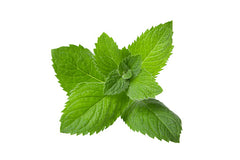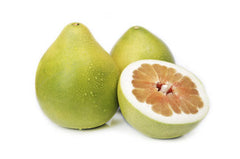What Does Palmarosa Smell Like?
Click For Affordable Inspired Perfume Alternatives

Embark on a fragrant journey to the grassy landscapes of India and discover the enchanting aroma of palmarosa. A lesser-known aromatic grass, palmarosa (Cymbopogon martinii) boasts a distinctive fragrance that captures the essence of green fields and blooming flowers. Join us as we explore the question: What does palmarosa smell like?
What Does Palmarosa Smell Like?
The fragrance of palmarosa is a delicate dance of floral sweetness with a hint of citrus and a touch of herbal freshness. Imagine the gentle aroma of rose petals mingled with the green notes of grass on a warm, sunny day. Palmarosa's scent is a celebration of its botanical origins, offering a soothing and uplifting olfactory experience.
Palmarosa's Floral Symphony
Enter the world of palmarosa, where the fragrance is a harmonious symphony of floral notes. Join me on a fragrant journey to discover the captivating aroma that defines the essence of palmarosa.
Floral Elegance: A Blooming Garden
As you approach palmarosa, the first olfactory impression is a burst of floral elegance, reminiscent of a blooming garden. Picture the soft and sweet scent of rose petals, intertwined with a subtle green undertone. Palmarosa's fragrance is a celebration of floral beauty, instantly transporting you to a serene garden with its delicate and comforting character.
Citrus Kiss: A Hint of Zest
The scent of palmarosa carries a gentle hint of citrus, adding a refreshing and uplifting quality to its floral profile. Picture the subtle kiss of lemon or lime, enhancing the overall brightness of the fragrance. Palmarosa's aroma is a delightful interplay of floral sweetness and citrusy freshness, creating a sensory experience that mirrors the vitality of sun-kissed meadows.
Herbal Serenity: Green Grass Underfoot
While predominantly floral, there's an herbal serenity in palmarosa's scent, reminiscent of the green grass underfoot. This herbal note adds depth to the fragrance, creating a well-balanced composition that is both comforting and invigorating. Palmarosa's aroma is a delightful fusion of floral elegance and herbal freshness, evoking the tranquility of nature.
Sweet Resonance: Balancing Floral and Herbal Notes
Delve deeper into the scent, and you may notice a sweet resonance that characterizes palmarosa's fragrance. It's as if the aroma carries the essence of a balanced bouquet, creating a comforting and uplifting olfactory experience. Palmarosa's fragrance is a sweet symphony of floral and herbal notes, inviting us to savor the natural harmony found within its essence.
Palmarosa's Botanical Ballet
Hence, palmarosa's fragrance is a botanical ballet of floral elegance, citrusy kiss, herbal serenity, and sweet resonance. It stands as a testament to the gentle and harmonious qualities of this aromatic grass, offering a sensory experience that is both comforting and uplifting. Palmarosa, with its soothing and complex aroma, invites us to appreciate the subtle nuances found within its leaves, a fragrant journey that unfolds with every delightful whiff.
Factors Influencing the Scent of Palmarosa Essential Oil
Palmarosa essential oil is a carefully distilled extract designed to capture the nuanced and botanical aroma of the Cymbopogon martinii grass. The formulation of this essential oil involves a thoughtful combination of aromatic compounds. Here are several factors that contribute to the sweet and floral scent of palmarosa essential oil:
-
Plant Variety: The specific variety of Cymbopogon martinii used in the distillation process can influence the fragrance profile, with different varieties offering subtle variations in scent.
-
Growing Conditions: The environment in which the palmarosa grass is cultivated, including factors such as soil composition, climate, and altitude, can impact the aromatic compounds present in the essential oil.
-
Distillation Method: The method used to extract palmarosa essential oil, whether through steam distillation or other extraction techniques, plays a crucial role in defining the aromatic profile. Specific distillation methods contribute to the faithful recreation of the sweet and floral scent.
-
Harvesting Time: The timing of the harvest, including the stage of plant growth and the time of day, can affect the concentration of aromatic compounds in the essential oil.
-
Age of the Plant: The age of the palmarosa plant at the time of harvesting can influence the overall fragrance. Younger plants may produce oils with different aromatic characteristics than mature ones.
-
Storage Conditions: Proper storage conditions for palmarosa essential oil, both before and after distillation, are essential to maintain its stability and fragrance. Storing it in dark, airtight containers helps preserve the freshness of the oil.
-
Quality of Distillation Equipment: The quality of the distillation equipment used in the extraction process can impact the purity and overall quality of the palmarosa essential oil.
-
Geographical Origin: Palmarosa grass cultivated in different regions may exhibit distinct aromatic profiles, influenced by the unique environmental conditions of each location.
-
Time of Distillation: The time duration of the distillation process can influence the concentration of specific volatile compounds in the essential oil, contributing to its overall scent.
-
Chemical Composition: The presence and concentration of specific chemical compounds, such as geraniol and geranyl acetate, contribute to the sweet and floral notes in palmarosa essential oil.
-
Blending Practices: In some cases, palmarosa essential oil may be blended with other essential oils to enhance certain fragrance characteristics or create unique blends.
Choosing High-Quality Palmarosa Essential Oil
Selecting a high-quality palmarosa essential oil allows you to experience the true essence of this aromatic grass. Whether used in aromatherapy, perfumery, or skincare, consider these factors to ensure you choose an authentic and premium palmarosa essential oil:
-
Botanical Name: Ensure that the essential oil is labeled with the correct botanical name, Cymbopogon martinii, to confirm its authenticity.
-
Purity: Look for 100% pure palmarosa essential oil without additives, fillers, or synthetic ingredients. Pure essential oils offer a more authentic and potent fragrance.
-
Color: Palmarosa essential oil typically has a pale yellow to light olive color. Excessive darkness may indicate impurities or adulteration.
-
Scent: The aroma should be sweet, floral, and slightly herbaceous, reflecting the natural fragrance of palmarosa. Avoid oils with off-putting or harsh scents.
-
Packaging: Choose essential oils packaged in dark or amber glass bottles. This helps protect the oil from light exposure, preserving its freshness and preventing degradation.
-
Reputation of the Brand: Research the reputation of the brand or manufacturer. Established brands with a commitment to quality are more likely to produce reliable and high-quality essential oils.
-
Source of Origin: Consider the geographical origin of the palmarosa essential oil. Oils sourced from regions known for producing high-quality palmarosa, such as India, may offer a more authentic fragrance.
-
Extraction Method: Steam distillation is the most common method for extracting palmarosa essential oil. Ensure that the oil is obtained through reputable distillation processes.
-
Certifications: Look for essential oils that carry certifications from reputable organizations, indicating adherence to quality and purity standards.
-
Price: While not the sole indicator of quality, unusually low prices may suggest inferior or adulterated essential oil. Invest in oils from reputable sources, even if they come at a slightly higher cost.
By considering these factors, you can confidently choose a palmarosa essential oil that not only aligns with your preferences but also ensures a high-quality and authentic aromatic experience in your chosen applications.
Where to Find Reputable Palmarosa Essential Oil
Exploring reputable sources for palmarosa essential oil allows you to enjoy the sweet and floral aroma of this versatile botanical extract. Whether used in aromatherapy, skincare, or DIY projects, consider these places to find high-quality palmarosa essential oil:
-
Specialty Essential Oil Retailers: Explore specialty retailers that focus on providing a wide range of essential oils. These stores may carry palmarosa essential oil alongside other botanical extracts, ensuring a diverse selection for your aromatic needs.
-
Online Essential Oil Shops: Reputable online platforms specializing in essential oils and aromatherapy products can be valuable sources for palmarosa essential oil. Look for well-established websites with detailed product descriptions and customer reviews.
-
Natural Health Stores: Health and wellness stores that emphasize natural and organic products may offer palmarosa essential oil. Inquire about the sourcing and quality standards of the oils available in these stores.
-
Aromatherapy Boutiques: Stores dedicated to aromatherapy and holistic wellness often carry a curated selection of essential oils, including palmarosa. These boutiques may provide expert guidance on the uses and benefits of palmarosa in aromatherapy.
-
Local Herbal Shops: Check with local herbal shops or stores that specialize in natural remedies. These establishments may carry palmarosa essential oil as part of their inventory of botanical extracts.
-
Organic Markets: Visit organic markets or farmers' markets that feature natural and organic products. Some vendors may offer high-quality palmarosa essential oil derived from sustainable and organic sources.
-
Essential Oil Workshops or Events: Attend workshops, fairs, or events focused on essential oils. Some vendors or exhibitors may showcase and sell palmarosa essential oil, providing an opportunity to explore different options.
-
Natural Beauty Stores: Specialty stores that focus on natural beauty and skincare products may include palmarosa essential oil in their offerings. These oils can be used for various skincare formulations.
-
Holistic Health Practitioners: Holistic health practitioners, such as aromatherapists or herbalists, may recommend reputable sources for palmarosa essential oil. Their expertise can guide you to trusted suppliers.
-
Word of Mouth: Seek recommendations from friends, family, or members of essential oil communities for trusted sources of palmarosa essential oil. Personal experiences and suggestions can guide you to reputable suppliers known for quality and authenticity.
-
Certified Organic Brands: Look for essential oil brands that prioritize organic and sustainable practices. Certified organic palmarosa essential oil ensures adherence to stringent standards for purity and quality.
-
Beauty and Spa Retailers: Some beauty and spa retailers may carry palmarosa essential oil as part of their aromatherapy or skincare product lines. Inquire about the source and quality of the oils they offer.
Before making a purchase, thoroughly research the reputation of the supplier, check for certifications, and read customer reviews. Authentic and reputable sellers provide clear information about the quality, purity, and sourcing of their palmarosa essential oil, ensuring a positive and satisfying aromatic experience.
20 Questions and Answers about Palmarosa:
-
What is Palmarosa?
- Palmarosa (Cymbopogon martinii) is a tropical grass known for its fragrant leaves and essential oil.
-
Where is Palmarosa grown?
- It is native to India, but it's also cultivated in other tropical regions like Africa, Central America, and Southeast Asia.
-
How is Palmarosa essential oil extracted?
- The essential oil is obtained through steam distillation of the dried grass.
-
What does Palmarosa essential oil smell like?
- Palmarosa has a sweet, floral fragrance with a hint of rose.
-
What are the main chemical components of Palmarosa oil?
- The oil contains geraniol, geranyl acetate, linalool, and other compounds contributing to its aroma.
-
How is Palmarosa used in perfumery?
- Palmarosa is used as a middle note in perfumery to add a floral and rosy nuance to fragrances.
-
What types of perfumes often include Palmarosa?
- It is commonly found in floral, oriental, and green fragrances.
-
Can Palmarosa be used as a base note in perfumes?
- Typically, it is used as a middle note, but in some cases, it can be blended with other base notes.
-
Does Palmarosa oil blend well with other essential oils?
- Yes, it blends well with oils like rose, geranium, lavender, cedarwood, and citrus oils.
-
What are the therapeutic properties of Palmarosa oil?
- Palmarosa is known for its antiseptic, antibacterial, and hydrating properties.
-
Does Palmarosa have any calming or uplifting effects?
- Yes, its aroma is believed to have calming and uplifting effects on the mind.
-
Can Palmarosa be used in aromatherapy?
- Yes, Palmarosa oil is commonly used in aromatherapy for its relaxing properties.
-
Is Palmarosa oil safe for topical application?
- Yes, when diluted properly, Palmarosa oil is generally safe for topical use.
-
Does Palmarosa have any skincare benefits?
- It is known for its moisturizing properties and is often used in skincare products.
-
Can Palmarosa be used in natural perfumes or colognes?
- Yes, its sweet and floral scent makes it a popular choice in natural perfumes.
-
Is Palmarosa oil commonly used in the cosmetic industry?
- Yes, it is often used in soaps, lotions, and other cosmetic products.
-
Does Palmarosa have any cultural significance?
- In some cultures, Palmarosa is used in traditional rituals and ceremonies.
-
What precautions should be taken when using Palmarosa oil?
- It should be used in moderation and properly diluted, and a patch test is recommended to check for any skin sensitivity.
-
Can Palmarosa oil be used in candles or home fragrances?
- Yes, it can be used to add a pleasant and calming aroma to candles and home fragrances.
-
Are there any sustainability concerns related to Palmarosa cultivation?
- Sustainable cultivation practices are encouraged to ensure the long-term availability of Palmarosa without harming the environment.
Buy Perfumes - Best Online Retailers
Click For Affordable Inspired Perfume Alternatives
Click For The Best Niche Perfumes & Decants
Pheromone Perfumes - Confidence, Attraction & Appeal - Click For More
Home Fragrances & Candle Warmers - Click To Scent Up Your Spaces Today!



